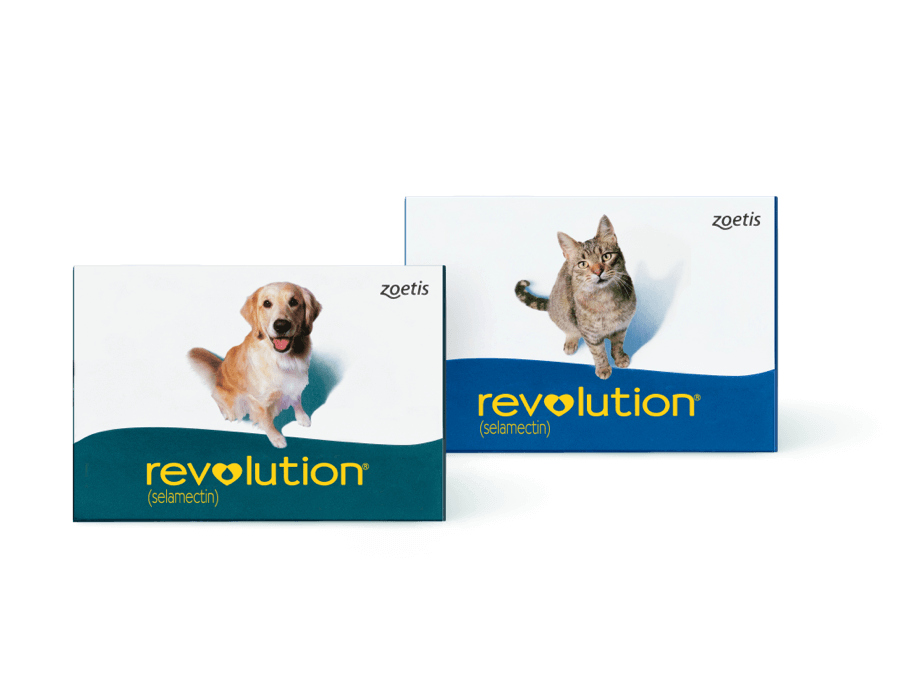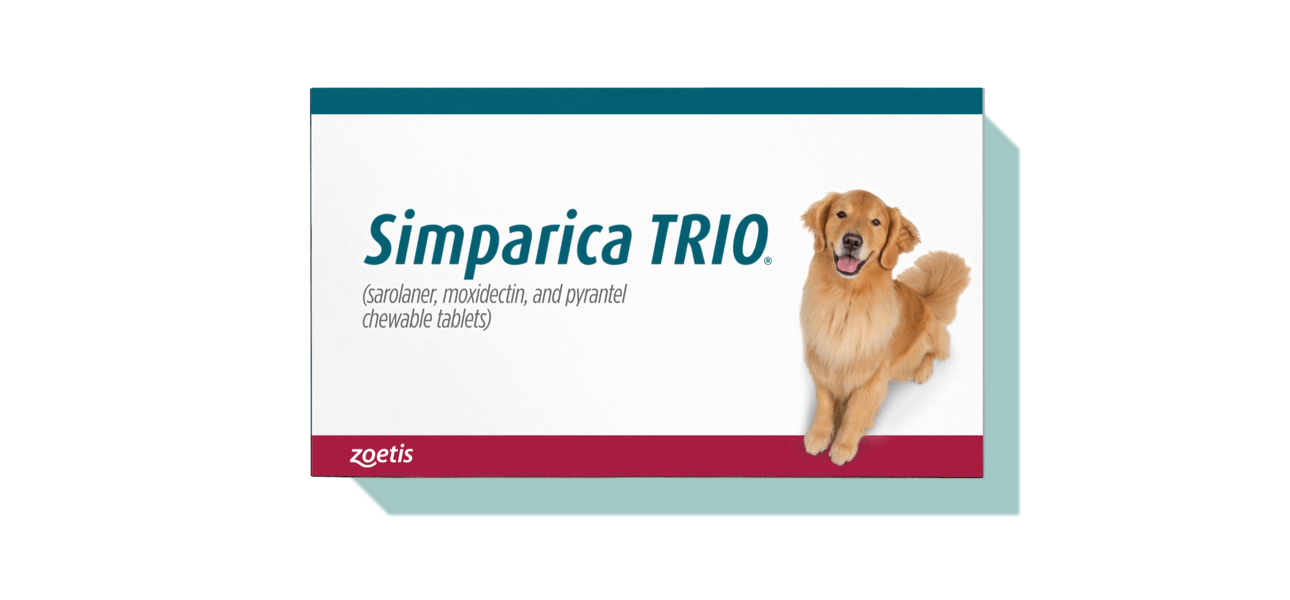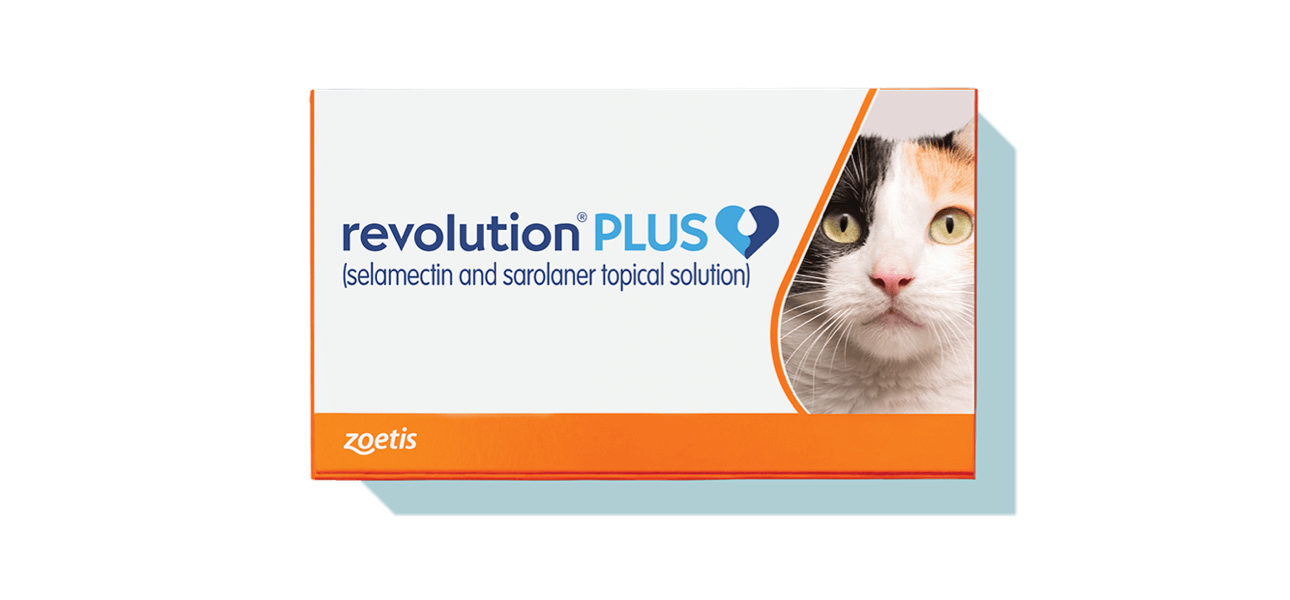


Revolution provides broad coverage in one simple, monthly topical application.
Revolution is available from select retailers and vets with a valid prescription.
![]()

Unlike some other brands, Revolution does not require gloves to apply, or separation time after application.
Simply wash your hands after applying and continue spending time with your pet as usual. One monthly dose protects pets against common parasites. Demonstrated safe for dogs at least 6 weeks of age, and for cats at least 8 weeks of age.
It’s important to apply Revolution at the same time every month to keep your pet protected. Stay on track with our monthly text or email reminders.
Parasites are not just “outdoor-only.” Any dog or cat could come in contact with harmful pests at any time of year.
Revolution is demonstrated safe for dogs as young as 6 weeks of age, and cats as young as 8 weeks of age.
![]()
![]()
![]()
![]()
Just 1 bite from an infected mosquito can give your dog or cat
heartworms. 7 If left untreated, heartworm disease will eventually cause:

![]()
If left untreated in dogs, these mites cause a skin disease referred to as sarcoptic mange, also know as scabies. Signs of an infection include:
![]()
Why should I care about roundworms?
![]()
Why should I care about hookworms?
 holding a dog." width="" height="" />
holding a dog." width="" height="" />




Revolution (selamectin) is a simple monthly topical medication demonstrated safe to protect your dog or cat from heartworm disease, fleas, and ear mites. Revolution is also used on dogs for the treatment or prevention of the American Dog Tick, and canine sarcoptic mange. For cats it is also used to treat or prevent hookworms, and roundworms. Revolution requires a prescription from your veterinarian.
What are the possible side effects of Revolution? What are the possible side effects of Revolution?The most common side effects include hair loss at the site of application with or without inflammation (redness, flaking) and gastrointestinal upset. See important safety information and full prescribing information, or speak to your vet for further information regarding possible side effects.
How does Revolution work? How does Revolution work?Just one dose a month applied at the base of the neck in front of the shoulder blades is all your pet needs for protection against fleas, heartworm disease and other parasites. No pills. No sticky sprays. No more hassling with multiple products.
After application, Revolution enters the bloodstream through the skin. Concentrations of Revolution in the blood and tissues prevent heartworm disease. Revolution selectively redistributes from the blood to the skin, where it provides protection against against common parasites.
How can I decide which pest protection is best for my pet? How can I decide which pest protection is best for my pet?Parasites are an annoying fact of life for our pets. Parasites can cause a range of problems, from bothersome scratching to more serious medical issues, such as infections and dangerous or even deadly diseases. How dangerous these problems are depends on the type of parasite, the degree of infection or infestation, and your pet’s reaction to the parasite.
Some parasites that affect dogs and cats also pose a disease risk to humans. Talk to your veterinarian about preventing these parasites and reducing their risks to your dog or cat.
How do I apply Revolution to my pet? How do I apply Revolution to my pet?Revolution is a simple-to-apply, quick-drying, small-volume, monthly topical solution—so there’s no need to hassle with larger volume topicals or giving your pet a pill!
What if I’m late giving a Revolution dose? What if I’m late giving a Revolution dose?Give the missed dose as soon as soon as you remember, then one month later continue with monthly doses as usual. Do not give a double dose of the medication.
What should I discuss with my veterinarian before using Revolution? What should I discuss with my veterinarian before using Revolution?Tell your veterinarian if your pet has ever had an allergic reaction to the medication.
What is the difference between Revolution and Revolution Plus? What is the difference between Revolution and Revolution Plus?Revolution Plus (selamectin and sarolaner topical solution) is for cats only. Revolution (selamectin) is for dogs and cats.
Revolution Plus adds to the spectrum of parasites covered for cats, by also protecting against ticks, and providing dual action against fleas and ear mites.
IMPORTANT SAFETY INFORMATION: See Prescribing Information. Do not use Revolution on sick, weak, or underweight animals. Use only on cats 8 weeks and older. Use only on dogs 6 weeks and older. Prior to administration, dogs should be tested for heartworms. In cats, side effects may include digestive upset and temporary hair loss at application site with possible inflammation. In people, Revolution may be irritating to skin and eyes. Wash hands after use.
Simparica Trio
Use with caution in dogs with a history of seizures. Simparica Trio contains sarolaner, a member of the isoxazoline class, which has been associated with neurologic adverse reactions including tremors, ataxia, and seizures in dogs with or without a history of neurologic disorders. The safe use of Simparica Trio has not been evaluated in breeding, pregnant, or lactating dogs. The most frequently reported adverse reactions in clinical trials were vomiting and diarrhea. See Prescribing Information.
Revolution Plus
The safe use of Revolution Plus has not been established in kittens less than 8 weeks old or in breeding, pregnant or lactating cats. Reported side effects in clinical trials included lethargy and anorexia. Use with caution in cats with a history of neurologic disorders. Sarolaner, one of the ingredients in Revolution Plus, is a member of the isoxazoline class, which has been associated with adverse reactions such as tremors, ataxia, and seizures. Reactions have occurred in cats with or without a history of neurologic disorders. In humans, Revolution Plus may be irritating to skin and eyes. See Prescribing Information.
*The American dog tick (Dermacenter variabilis)
References:
Sign-Up for Vet-Approved Health Tips, Giveaways, and More
By signing up you agree to our Terms of Use